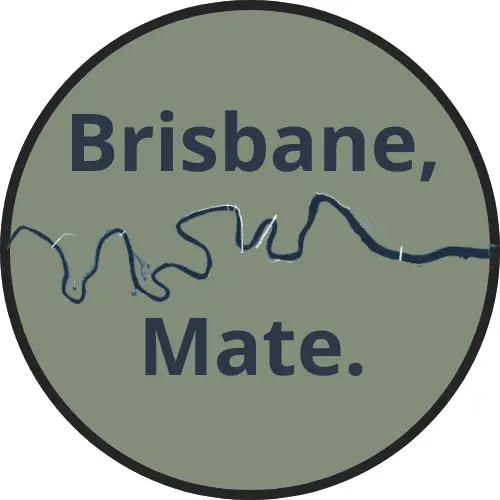
Brisbane, the vibrant capital of Queensland, is experiencing rapid growth. As the city expands, so does the need for an efficient and reliable public transport system. One of the key components of Brisbane’s transportation network is its busways.
In this comprehensive guide, we will explore the benefits, facilities, safety measures, and future developments of busways in Brisbane. Whether you’re a resident or a visitor, understanding the ins and outs of the busway system will help you navigate the city with ease.


Brisbane Busway destinations
Southeast Busway:
The Southeast Busway runs from the southern suburbs of Brisbane, through the city centre, and up to the northern suburbs. It serves various stations along the way, including:
Eight Mile Plains
Altandi
Runcorn
Fruitgrove
Kuraby
Underwood
Springwood
Rochedale
Eight Mile Plains
Upper Mount Gravatt
Griffith University
Holland Park
Buranda
Woolloongabba
South Bank
Mater Hill
Cultural Centre
Boggo Road
Park Road
South Brisbane
Mater Hill
Cultural Centre
Buranda
Northern Busway:
The Northern Busway connects the northern suburbs to the city centre. Key stations include:
Kedron
Lutwyche
Windsor
Herston
Normanby
Roma Street
Eastern Busway:
The Eastern Busway serves the eastern suburbs of Brisbane and connects to the city centre and South Bank. Key stations include:
Coorparoo
Langlands Park
Stones Corner
Buranda
Woolloongabba
Park Road
South Bank
What Is the busway in brisbane?
A busway is like an exclusive road just for buses, making them faster and more reliable. It has special bus stops, quick ticketing, and buses come often. It’s a way to have better public transportation in cities.
How Do you use the busway in brisbane?
Brisbane offers a comprehensive public transportation system with buses, trains, and ferries. When using the network, it’s advisable to get a TransLink Go Card for convenience. You can also buy prepaid paper tickets at stations and ticket machines before boarding any bus, train, or ferry.
Why Does brisbane use Busways?
Brisbane’s busways were designed to allow buses to service low-density suburbs and bypass peak hour congestion on major roads, linking with the rail network to improve public transport connectivity. This allows a balance between the convenience of localised bus services with the efficiency of medium haul commuter transport to the city’s activity centres in a highly radial city like Brisbane.
Benefits of Busways
Busways in Brisbane offer a multitude of advantages that make commuting a breeze. By separating buses from general traffic, these dedicated roadways ensure faster travel times, especially during peak periods.
Buses can easily avoid congestion and traffic lights, resulting in a smooth and efficient journey. This increased efficiency allows for greater frequency and a variety of bus services to choose from, giving commuters more options and flexibility.
Another significant benefit of busways is their seamless integration with other modes of public transport. Whether you need to transfer to a train, ferry, or another bus service, the well-connected busway stations make it easy to plan your journey. Additionally, each bus trip on the busway system takes about the same time, as buses are not affected by traffic congestion. This consistency allows for better journey planning and ensures that you can rely on the busway system to get you to your destination on time.
Busway Stations: Modern and Accessible
The busway stations in Brisbane are designed to provide commuters with a comfortable and convenient experience. Reflecting the city’s commitment to accessibility, each station features two platforms, electronic timetable information, and full wheelchair accessibility. The stations are equipped with 24-hour security and CCTV cameras, ensuring the safety and security of passengers at all times.
To cater to the diverse needs of commuters, most busway stations also offer bicycle access and storage facilities. This encourages sustainable transportation options and provides a convenient solution for those who prefer to combine cycling with public transport. Moreover, the stations are equipped with go card fare machines, allowing passengers to easily purchase tickets and access the busway network.
Environmental Benefits
One of the most compelling reasons to embrace bus travel is its positive impact on the environment. A full bus produces significantly less pollution per person compared to a full car. In fact, it only takes six passengers to make the bus a cleaner option than individual cars. By choosing to travel by bus, you contribute to reducing air pollution and improving air quality in Brisbane. Additionally, every full bus on the road means 50 fewer cars, which helps alleviate congestion and reduce noise pollution.
The importance of environmentally friendly practices extends beyond the operational benefits of bus travel. When constructing new busways, Brisbane City Council conducts air quality studies to ensure that local air quality and the health of nearby residents are protected. The busway stations themselves are built with sustainability in mind. They incorporate features such as rainwater harvesting for station irrigation, solar-generated power, natural ventilation and lighting, and drought-resistant landscaping. By incorporating these eco-friendly elements, Brisbane’s busway network demonstrates a commitment to building a greener city.
Public Art: A Creative Touch
Brisbane’s busway stations not only provide efficient transportation options but also serve as platforms for artistic expression. As you navigate the busway network, keep an eye out for the unique public art installations that adorn some of the stations, tunnels, and walls. These artistic elements add a touch of creativity and vibrancy to the city’s public spaces, creating an engaging environment for commuters and visitors alike.
Evolution of Brisbane’s Bus Network
To meet the growing demands of Brisbane’s expanding population, Brisbane City Council is continuously evolving the bus network. The introduction of high-frequency turn-up-and-go services aims to connect people, places, and activities seamlessly. By investing in these services, the council strives to provide efficient and reliable public transport options that cater to the needs of residents and visitors.
To ensure that the new bus network meets the expectations and requirements of the community, Brisbane City Council conducts comprehensive community consultations. These engagements provide an opportunity for the public to voice their opinions and preferences regarding the proposed network changes. The feedback received during these consultations is carefully reviewed and analyzed, shaping the final design of the bus network.
Brisbane’s New Bus Network: What to Expect
The future of Brisbane’s bus network looks promising, with exciting developments on the horizon. One of the key changes is the introduction of two new Brisbane Metro lines. These additions will unlock capacity and provide more efficient transport options for commuters. The new network aims to reduce bottlenecks and congestion by optimizing the utilisation of busways and streamlining entry and exit points in the CBD, ensuring greater service reliability.
The new bus network also focuses on enhancing connectivity with other modes of public transport, such as the Cross River Rail. This integration creates more interchange opportunities and expands travel options for commuters. By seamlessly connecting different modes of transportation, Brisbane’s bus network becomes more accessible and user-friendly.
Future Extensions and Enhancements
As Brisbane continues to grow, so does the need for further enhancements and expansions of the bus network. Future stages of the Brisbane Metro could see services extending to other areas of the city, including Chermside, Brisbane Airport, Capalaba via Carindale, and Springwood. These extensions would be contingent upon the delivery of busway infrastructure, available funding, and government approvals. Brisbane City Council remains committed to working collaboratively with other levels of government to realize these future stages.
Conclusion
Brisbane’s busways are integral to the city’s public transport system, offering commuters an efficient and reliable way to navigate the city. With dedicated roadways, busway stations equipped with modern facilities, and a focus on sustainability, Brisbane’s bus network sets a high standard for public transportation. As the city grows and evolves, Brisbane City Council continues to invest in the expansion and improvement of the bus network, ensuring that residents and visitors have access to convenient and environmentally friendly transportation options. Whether you’re commuting to work, exploring the city’s attractions, or simply enjoying a day out, Brisbane’s busways are an essential element of your journey. Embrace the benefits of bus travel and experience the convenience and reliability of Brisbane’s busway network.






